Considering History: Voices and Stories of the Mexican-American Experience
This series by American studies professor Ben Railton explores the connections between America’s past and present.
In the prior two posts in this series on Myths and Realities of the Mexican-American Border and Mexican Americans as Political Prop in the 20th and 21st Centuries, I’ve traced the Mexican-American border’s constructed and contested nature, the border patrol’s origins and initial role in the Chinese Exclusion era, and the use of Mexican Americans as a political prop throughout the 20th century. These histories form a vital backdrop for any conversations about the border and immigration, and as a result need to be more fully understood in our heated contemporary moment.
Yet one element is largely missing from those posts: the voices and stories of Mexican Americans themselves. In each historical period, we find compelling stories that certainly highlight the effects of our most exclusionary national policies but that also exemplify how Mexican Americans have fought for their own and their community’s rights within an evolving America.
María Amparo Ruiz de Burton Depicts the Mexican-American Experience
The first Mexican-American author to publish fiction in English, María Amparo Ruiz de Burton, experienced first-hand and wrote about the late 19th century aftermath of the Mexican-American War and the Treaty of Guadalupe Hidalgo. The daughter and granddaughter of Mexican generals and political leaders, after the Treaty a teenage Ruiz moved north to Alta California with her family. She met and married an American military officer, and they began operating a ranch just outside of California. But he was injured during the Civil War and died shortly thereafter, and when Ruiz de Burton returned to California with her two children she found that Anglo squatters had occupied the ranch (a far too common experience for Mexican-American landowners in the era).
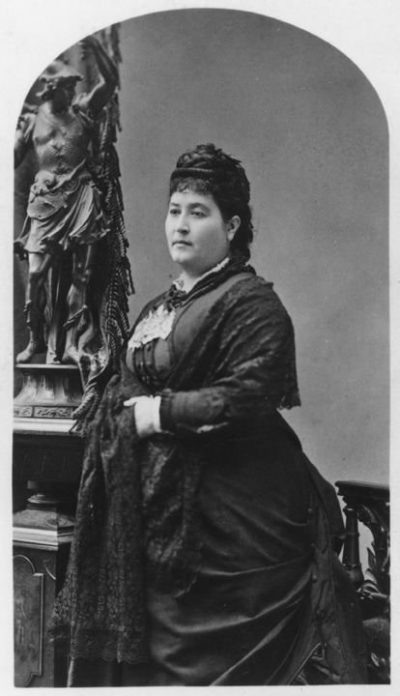
For the remainder of her life Ruiz de Burton fought legal and political battles to regain and secure her ranch and land claims. At the same time, she published a number of literary works, including two compelling novels: Who Would Have Thought It? (1872), which uses the story of an adopted mixed-race girl to satirize Anglo-American ideals and prejudices; and The Squatter and the Don (1885), which highlights the experiences of both Anglo arrivals and Mexican landowners in post-Treaty California. While these novels do not shy away from the harshest realities of late 19th century Mexican American life, Ruiz de Burton also portrays an American future that includes (and in Squatter romantically unites) all these cultures and communities.
Stories from the Mexican Repatriation Program
The Mexican Repatriation program of the 1930s represented one of the first national policies that sought instead to exclude Mexican Americans from that shared future. Francisco Balderrama and Raymond Rodríguez’s Decade of Betrayal: Mexican Repatriation in the 1930s (1995) features the stories of many of the millions of Mexican Americans (a majority of them birthright citizens) affected by this exclusionary policy. In one telling moment in the book, Southern California radio host José David Orozco and his guest Dr. José Díaz share stories of married couples and families separated by the region’s deportation sweeps. And the policy’s effects were felt nationwide, as illustrated by a groundbreaking 1973 study of the near-complete destruction of the Mexican-American community in Gary, Indiana (where many had been employed by U.S. Steel).
The Successes of the League of United Latin American Citizens
 Many Mexican Americans fought back against the era’s discriminations. Founded in February 1929 in Corpus Christi, Texas, the League of United Latin American Citizens (LULAC) was modeled in part on the National Association for the Advanced of Colored People (NAACP). Two founding members, Pedro and María Hernández, were particularly instrumental in developing LULAC’s multilayered social and political agenda: María, an elementary school teacher and mother of ten, focused on educational outreach and support for expectant and new mothers; Pedro, a political and legal activist, organized a successful lawsuit challenging the Texas legislature’s longstanding policy of excluding Mexican Americans from juries. Over the next decades LULAC would extend those efforts: creating community education and preschool programs (such as the popular Little School of the 400 program); conducting voter registration campaigns and opposing efforts to disenfranchise Hispanic voters; suing school districts that denied Mexican-American students equal access and opportunities; and advocating for both basic rights and full citizenship for Mexican and Hispanic Americans. Two of their successful educational lawsuits, Mendez v. Westminster (1945) and Minerva Delgado v. Bastrop Independent School District (1948), helped create the precedents that would lead to the Supreme Court’s turning point anti-segregation decision in Brown v. Board of Education (1954).
Many Mexican Americans fought back against the era’s discriminations. Founded in February 1929 in Corpus Christi, Texas, the League of United Latin American Citizens (LULAC) was modeled in part on the National Association for the Advanced of Colored People (NAACP). Two founding members, Pedro and María Hernández, were particularly instrumental in developing LULAC’s multilayered social and political agenda: María, an elementary school teacher and mother of ten, focused on educational outreach and support for expectant and new mothers; Pedro, a political and legal activist, organized a successful lawsuit challenging the Texas legislature’s longstanding policy of excluding Mexican Americans from juries. Over the next decades LULAC would extend those efforts: creating community education and preschool programs (such as the popular Little School of the 400 program); conducting voter registration campaigns and opposing efforts to disenfranchise Hispanic voters; suing school districts that denied Mexican-American students equal access and opportunities; and advocating for both basic rights and full citizenship for Mexican and Hispanic Americans. Two of their successful educational lawsuits, Mendez v. Westminster (1945) and Minerva Delgado v. Bastrop Independent School District (1948), helped create the precedents that would lead to the Supreme Court’s turning point anti-segregation decision in Brown v. Board of Education (1954).
The Bracero Program Sparks Activism
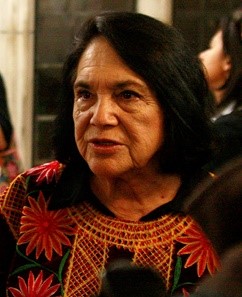
The Bracero Program was series of agreements between the U.S. and Mexico that promised decent living conditions to Mexicans who came to the U.S. to fulfill a labor shortage in agriculture, starting in the 1940s. It brought new Mexican Americans to the U.S., and they added their voices to this evolving story. The National Museum of American History’s wonderful exhibition, Bittersweet Harvest: The Bracero Program 1942-1964, captured many bracero voices and experiences, documenting each stage of bracero life from the journey and the border to brutal conditions, labor activism, and multi-generational family legacies. One quote, from former bracero Guadalupe Mena Arizmendi, sums up both the program’s realities and its possibilities: “Es puro sufrimiento, le digo, allí sí se sufre y allí andamos, eso queríamos (I tell you, it is pure suffering, there you suffer and there we were, that is what we wanted).” Mexican-American author Tomás Rivera, himself the son of braceros, portrays the community’s experiences and legacies with grit and power in his novel And the Earth Did Not Devour Him (1971).
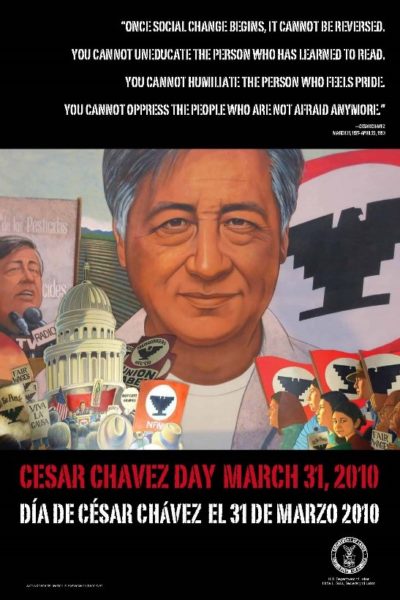
Out of the Bracero Program and era came as well the first moves toward national activism on behalf of migrant laborers. Dolores Huerta, the daughter of a migrant laborer father and a mother who ran a hotel and restaurant for migrant workers, founded the Agricultural Workers Association in 1960 when she was just 30 years old; two years later she joined forces with César Chávez, the son of two migrant laborers and then the Executive Director of the activist Community Service Organization, to co-found the National Farm Workers Association (NFWA). A few years later, the NFWA joined striking Filipino-American laborers from the Agricultural Workers Organizing Community (AWOC) in the 1965 Delano (CA) grape strike, a hugely influential effort that would last nearly five years, lead to the founding of the United Farm Workers (UFW) when the two groups merged, and fundamentally reshape late 20th century American labor and politics.
Operation Wetback’s Legacy
These decades continued to witness anti-Mexican-American discrimination and exclusionary policies, most notably the mid-1950s federal deportation program known as Operation Wetback. Historian Mae Ngai’s award-winning Impossible Subjects: Illegal Aliens and the Making of Modern America (2004) features the stories of many of those affected by Operation Wetback. She highlights, for example, a July 1955 incident in which “some 88 braceros died of sunstroke as a result of a roundup that had taken place in 112-degree heat, and … more would have died had Red Cross not intervened.” Elsewhere she quotes a congressional investigation that referred to a ship transporting deportees to Mexico as the equivalent of “an eighteenth century slave ship” and a “penal hell ship.” LULAC’s newsletter depicted deportees arriving in Mexico as “broken men, with strength spent and exhausted by the senseless struggles of a life revolving around slavish, ill-paid labor, and the degradation of jail and prison cells.”
The Accomplishments of the National Council of La Raza
These evolving exclusionary policies required new activist organizations, and the 1960s saw the creation of a vital one: the National Council of La Raza. La Raza was also the name of a community newspaper edited by Eliezer Joaquin Risco Lozada, a prominent young activist in Fresno who would go on to open rural health clinics throughout the region, create the first La Raza Studies (later Chicano Studies) program at Fresno State University, and advocate for Latino-American rights throughout his inspiring life. In March 1968, inspired by Lozada and other activists, Southern California high school students led the East Los Angeles Walkouts, a stunning and successful mass action that garnered national attention and made clear that Mexican- and Latin-American communities were fully part of the era’s burgeoning civil rights movements.
Writers Chronicle Mexican-American Life
The late 20th and early 21st centuries saw the emergence of a number of Mexican-American creative writers who brought these histories, stories, and communities into their ground-breaking literary works. Novelist Rolando Hinojasa has created, across the 15 volumes to date in the Klail City Death Trip Series, a fictional border county and community modeled on the South Texas Rio Grande Valley in which he grew up. Scholar and activist Gloria Anzaldúa likewise grew up in the Rio Grande Valley, and turned that border setting into the basis for her multi-lingual multi-genre masterpiece Borderlands/La Frontera: The New Mestiza (1987) among many other works. And Professor Norma Cantú, the foremost translator of and scholar on Anzaldúa’s works, has published her own memoirs as both a Mexican-American immigrant and a 21st century contributor to the continuing story of Mexican-American identity and community.

As part of his trip to the Rio Grande Valley and the border last week, President Trump visited Anzalduas Park, a county park along the river. Perhaps this historical moment can produce more than further border and immigration debates—perhaps it can lead us to more collective engagement with the story of Gloria Anzaldúa and other Mexican-American figures and communities. Their voices deserve a far more central role in our collective memories, our present conversations, and our shared future.
Note: This piece benefited greatly from the suggestions of Professors Laura Belmonte and John Buaas.
Considering History: Mexican Americans as Political Prop in the 20th and 21st Centuries
This series by American studies professor Ben Railton explores the connections between America’s past and present.
As I discussed in my last column, when the Mexican-American border began to be patrolled in the early 1900s, the explicit and sole focus was on the only immigrants defined as “illegal” during that era: first Chinese and eventually most Asian arrivals to the United States. When the Immigration Act of 1924 extended those limitations and exclusions, additional nationalities became targets for the newly formalized Border Patrol. But arrivals from the Western Hemisphere were overtly exempt from that law, meaning that Mexicans and other Central and South Americans could still cross the border more freely (and U.S. residents could likewise cross to Mexico with ease).
All that would soon change, however. Beginning in the 1920s, and continuing throughout the 20th and into the 21st centuries, debates over the Mexican-American border would shift significantly, focusing on arrivals from Mexico and other Latin American nations. Moreover, those debates and the resulting policies have consistently fluctuated between xenophobic fears of Hispanic arrivals and cynical attempts to capitalize on them as a labor force, leaving the immigrant individuals, families, and communities themselves too often outside of these conversations.
A 1928 speech on the House floor from Texas Congressman John Box exemplified the shift to anti-Latin-American narratives. Arguing that the new national quotas should be amended to include Mexico and other Western Hemisphere nations, Box thundered, “Every reason which calls for the exclusion of the most wretched, ignorant, dirty, diseased, and degraded people of Europe or Asia demands that the illiterate, unclean, peonized masses moving this way from Mexico be stopped at the border.” Box went further, elucidating a number of the xenophobic stereotypes that have become standard fare for anti-immigrant arguments:
Another purpose of the immigration laws is the protection of American racial stock from further degradation or change through mongrelization. … This blend of low-grade Spaniard, peonized Indian, and Negro slave mixes with Negroes, mulattoes, and other mongrels, and some sorry whites, already here. The prevention of such mongrelization and the degradation it causes is one of the purposes of our laws which the admission of these people will tend to defeat. … To keep out the illiterate and the diseased is another essential part of the Nation’s immigration policy. The Mexican peons are illiterate and ignorant. Because of their unsanitary habits and living conditions and their vices they are especially subject to smallpox, venereal diseases, tuberculosis, and other dangerous contagions. Their admission is inconsistent with this phase of our policy. … The protection of American society against the importation of crime and pauperism is yet another object of these laws. Few, if any, other immigrants have brought us so large a proportion of criminals and paupers as have the Mexican peons.
Box’s xenophobic and nativist narratives were taken up by a number of prominent cultural voices, including a contributor to the Saturday Evening Post. In a series of 1929 and 1930 articles, including “We Must Be on Our Guard” and “The Mexican Invasion,” anti-immigration activist Roy L. Garis extended Box’s cases for excluding Mexican arrivals and expelling Mexican Americans. Inspired by such cultural fears, and galvanized by the Great Depression and its accompanying economic and labor crises, in late 1929 President Herbert Hoover launched the Mexican Repatriation program. By 1936 at least half a million Mexican Americans (a majority of them birthright citizens) had been deported to Mexico; some scholarly estimates place the number as high as two million. At least 10,000 per year would continue to be deported until the program’s 1940 conclusion.
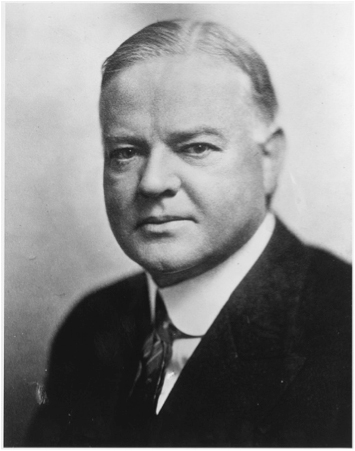
Just two years later, however, with the Depression over and World War II underway, the United States desperately needed additional labor forces, and the pendulum swung once more. On August 4th, 1942, the U.S. signed the Mexican Farm Labor Agreement with Mexico, creating the Bracero (“manual laborer”) Program through which Mexican laborers were guaranteed the chance to enter the U.S. and certain basic protections such as food, shelter, and a minimum wage of 30 cents per hour. The program was extended and amplified by the 1951 Migrant Labor Agreement, and by its end in 1964, an average of 200,000 braceros were being brought to the U.S. per year. Yet these arrivals not only had no ability to advocate for their own rights as laborers (attempts at action such as a 1943 strike alongside Japanese workers in Dayton, Washington were ruthlessly squashed), but likewise were offered no chance of becoming permanent residents or American citizens.
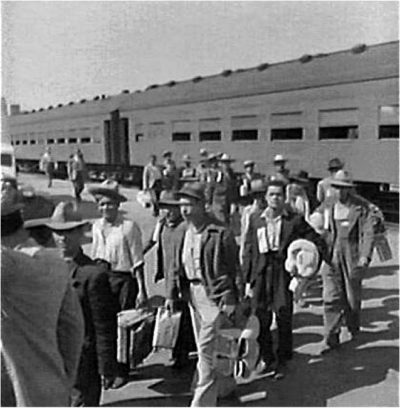
Even during this era of heightened need for and importation of Mexican laborers, continued anti-Mexican sentiments and fears of “illegal” immigrants produced xenophobic federal policies. The most extreme of these was 1954’s Operation Wetback, a policy initiated by President Eisenhower’s new Immigration and Naturalization Service (INS) Commissioner Joseph Swing. Swing was a former World War II general who had fought against Pancho Villa during the 1916 “Mexican Punitive Expedition,” and he created Operation Wetback in an attempt to drastically enhance border patrols and amplify the number of deportations of Mexican Americans. In 1954 alone the program produced more than 1 million “returns,” defined as “confirmed movement of an inadmissible or deportable alien out of the United States not based on an order of removal.” Although deportations did not continue at that level, and indeed were countered by additional arrivals throughout the period, Swing’s program exemplified the continued presence of anti-Mexican sentiments even in the Bracero era.
The swings between those kinds of policies and programs, and the concurrent use of Mexican Americans as a political prop, have continued for the last half-century. Just a year after the Bracero Program ended, the Immigration and Naturalization Act of 1965 did away with national quotas, creating instead a system of preferences that aided some Mexican arrivals (those with family connections) but severely limited many others (due to an emphasis on particular kinds of educational and professional backgrounds). As a result of the latter policy, many businesses began relying more and more on undocumented immigrants, a pattern that continued unabated until the 1986 Immigration Reform and Control Act sought to curtail such practices and give some undocumented immigrants a path toward legal status. Needless to say, the issue has in no way been resolved since then, with the failed 2006 Comprehensive Immigration Reform Act as an illustration. That proposed bill attempted to thread the needle, ramping up border security and patrols while offering both new guest worker programs and a path to legal status for undocumented immigrants already in the U.S., but that last provision in particular was viewed by many members of Congress as an “amnesty” and led to the bill’s defeat in the House of Representatives.
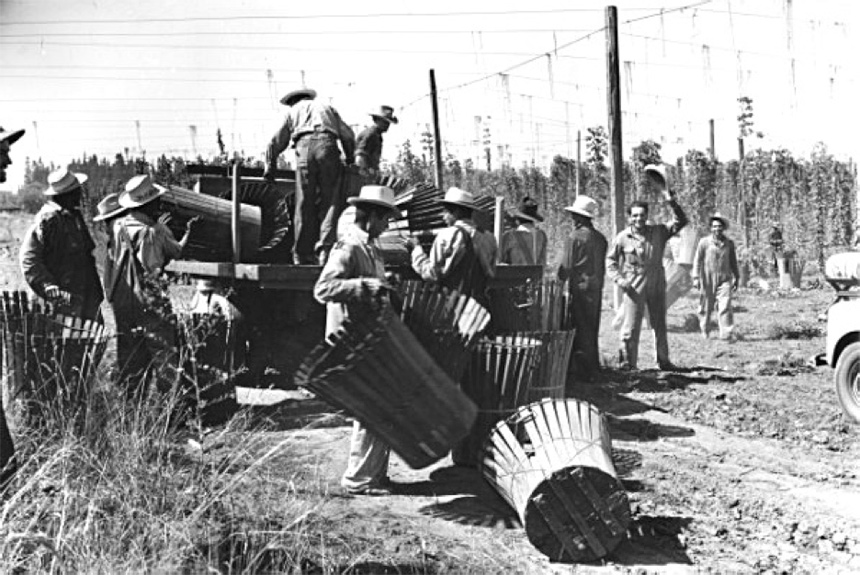
Noteworthy in each of those eras is the absence, or at least minimization, of Mexican- and other Latin-American voices within them. Each of those repatriated Mexican Americans, each of the Braceros, each of those affected by Operation Wetback is not only an individual but a part of families, communities, American identity and history. In an era when Mexican and Latin Americans and the Mexican-American border have once again become a political prop, it is long past time to remember and tell the stories of those individuals and communities. I’ll highlight a few in my third and final post in this series.